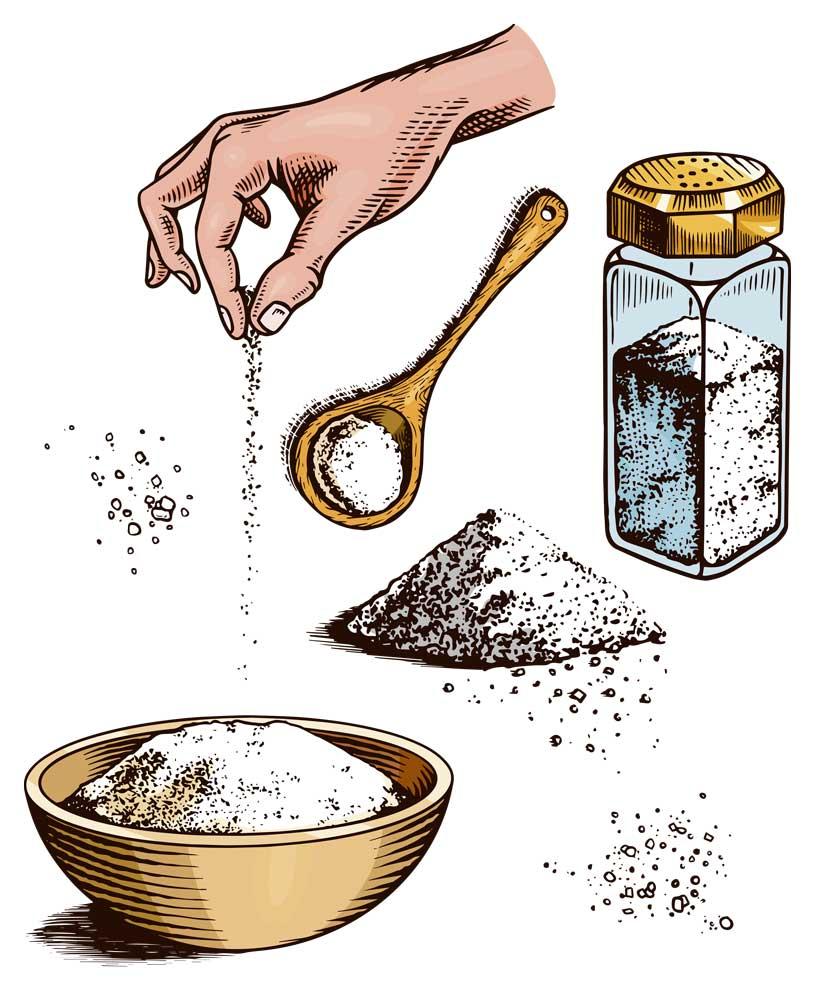The season’s seasoning
26.02.2020 Gstaad LivingThe explanatory paragraph helped a bit. The Salzhüsi was built in 1757, and salt was sold there until the 1950s. It noted that cheese production and cattle breeding, two important Saanenland industries, depended on a sufficient and secure supply of salt. Got it. But why would a whole building be needed to store and sell something as common today as, well… salt?
Turns out that’s a relatively recent state of affairs. According to Mark Kurlansky’s Salt: A World History, from the beginning of civilization until about 100 years ago, salt was one of the most sought-after commodities in human history. Wars were fought over it, and cities were founded based on its proximity (think Hallstatt, Salins-les-Bains, and Salzburg).
Salt is the mineral sodium chloride (NaCl). Chloride is essential for digestion and respiration, and sodium, which the human body does not produce, transports nutrients and oxygen transmits nerve impulses and moves muscles, including the heart. We constantly lose bodily salt through exertion, and it must be replaced if we are to remain going concerns.
Animals need salt too, and their requirements created our landscape. Game wore paths to salt licks, hunters followed, trails became roads, and settlements grew beside them. When post-Neolithic humans shifted from salt-rich game to a grain-based diet, finding more salt was a necessity. Brine from natural springs was boiled in pots, and salt pans built on seashores. Governments subsequently got in on the act, and salt tax revenues funded armies and massive construction projects like the Great Wall of China.
Salt infuses our culinary vocabulary. Salad comes from the ancient Roman term for salted greens, and salami is derived from the Italian to salt. In Roman times, a man in love was called salax, ‘in a salted state’, reminiscent of what we say today about chefs who put too much salt in our dinners.
Until modern times, salt provided the principal way to preserve food. Ancient Egyptians may have been the first to cure meat and fish with salt, which kills bacteria and has the effect of unwinding flesh’s proteins like cooking. Milk was preserved by heating it and adding rennet, and often salt (depending on the variety), creating cheese. In today’s Saanenland, Alpkäse is given salt brine treatments after the curd is formed in a mold and pressed, replicating processes described by the Roman Columella in c. 50 AD.
So, back to the Salzhüsi… In the late Middle Ages, Bern did not have its own salt supply, and imported it on muleback from Austria, Germany, and Burgundy. In 1475, Bernese invaders started boiling salt brine from the springs at Bex, and in 1623, Bern established a salt monopoly to prevent exorbitant pricing and ensure sufficient supply. Salt from Bern might have been stored in the Saanenland’s Susten, or warehouses, for transshipment of goods, before being kept in a predecessor of the Salzhüsi.
Today, Switzerland has its own salt monopoly, Saltworks AG, owned by the 26 cantons and Liechtenstein, which ensures an adequate supply for all its various uses. Only ten percent of the approximately 600,000 tonnes of salt produced annually is used domestically, with 30-50% allocated to keeping ice off the roads and sidewalks. Ergo, while salt is truly the seasoning for all seasons, in winter it really sits at the head of the table.
Alex Bertea




